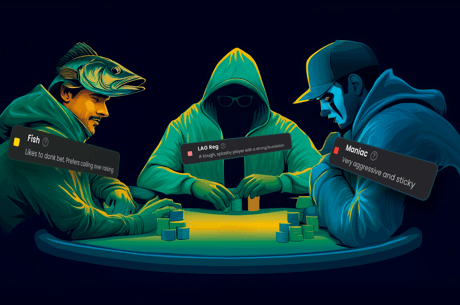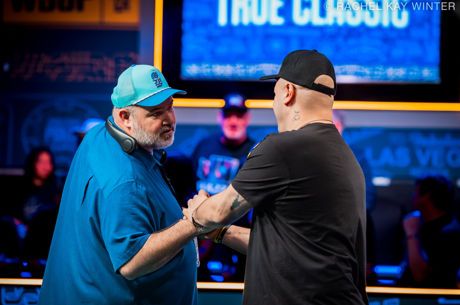Off the Green and On the Felt; or, The Object of the Game

A while back I was able to find a few free hours one weekend to go play golf with my father and brother. Like poker, golf can be an incredibly humbling game that can bring immense pleasure and cause tremendous frustration.
There are a lot of other parallels between golf and poker, including the fact that both games are played by people with a wide variety of experience and/or commitment. Most of us are “recreational” poker players, just like most of those traveling around the courses on a Saturday like we did are recreational golfers. Meanwhile we watch the pros play for higher stakes on television and sometimes compare ourselves to them — even sometimes learning certain things from them, too.
As a casual golfer, I recognize there are many aspects of my game where my skill level is well below where it would need to be for me to be competitive even with serious amateurs. I’m okay off the tee, and a lifetime of miniature golf experience has made me competent on the greens. But in between — the medium-length iron shots and trying to pitch onto the green — can be a problem for me.
Being able to hit decent tee shots is a little like knowing how to play preflop in hold’em, especially if you have a good idea of how starting hands compare and know that it is better to play fewer hands from early position and more hands from late position. With a little competence, you find there aren’t too many variables you need to consider, and the decision how to act is often not too terribly complicated.
Likewise being able to putt might be compared to having some idea how to play fifth street, should a hand get that far. You’re no longer thinking about completing a draw or improving your hand (or whether your opponent might be drawing or looking to improve), but rather have arrived at a point where you’re having to decide how your hands compare and what kind of action will produce the best result.
In other words, you might say there’s a lot more uniformity in the decision-making both off the tee (or preflop) and on the green (or on fifth street). That’s not to say the decisions are easy — it can be very hard sometimes to know what to do with certain hands before the flop or when deciding whether or not to call an opponent’s river shove. But the situations tend to resemble each other a lot and thus the decisions can seem familiar and thus relatively less daunting.
Meanwhile those strokes in between can be hard, just like the flop and turn often can be especially difficult streets to play in hold’em. I say that because in both cases we end up in unfamiliar territory a lot — sometimes literally on the golf course, sort of like when I found myself hitting out of the woods a couple of times during that round. The variables increase, producing less familiar spots and thus relatively greater challenges.
I also find that since I use the driver and putter frequently, I’m relatively comfortable with those clubs, and since I use the irons and wedges less often, I run into trouble sometimes with shots requiring those. For example, on the very first hole of our round, I found myself just off the green and needing to use the pitching wedge. I lined up my shot, took a few practice swings, then launched my ball up in the air with an arc that turned out to be much higher than I’d wanted.

The ball dropped down out of the sky and incredibly found a small hole in the back of the large fan on the green’s edge positioned about ten feet high atop a pole. The hole was not much larger than the ball itself, in fact.
We were all stunned into silence for a moment, then burst out laughing. The chance of dropping my ball into the fan like that was probably less likely than my hitting a hole-in-one on a short par 3, I’d argue. Not that I’d persuade you with my argument — not after showing you this picture to the left.
Anyhow, since that was the very first hole, I had 17 more to work on trying to hit some better shots with that darn pitching wedge. As I found myself focusing more particularly on this one element of my game, I thought about a great piece of advice Tommy Angelo gives in his book The Elements of Poker in a section titled “The Object of the Game.”
There Angelo explains that while poker has a pretty obvious “object to the game” — namely, “to stand up with more money than you sat down with” — it is possible also to choose other “objects” to aim for as you play.
“What if you decided that for today’s session, the object of the game was not to tilt?” asks Angelo. “What would you do differently? What if the object of the game was to act last on the turn and river? What if it was to quit while you felt fresh?”
He concludes by pointing out that by giving yourself new, smaller, more narrowly-defined goals or “objects” while playing, you actually can improve your overall game and have a better chance of achieving that other object to make more money playing poker.
“By making up your own object of the game,” Angelo explains, “you sharpen the focus of your energy onto that objective.”
It’s smart advice, especially if as a poker player you find yourself having one particular trouble spot such as calling too many raises out of position or overplaying AxQx or some other “sand trap” you find yourself landing in over and over. Make yourself a new, specific “object of the game” within the game, and give yourself a chance to improve upon that problem area.
I did manage to pitch some balls onto greens with more accuracy as the round wore on, and while my total score wasn’t anything to brag about, I came away feeling good about my play and that I’d improved. And we'd definitely achieved another important object of the game — both in poker and in golf — to have fun!
Honesty also compels me to admit that I lost a few balls along the way. But I didn’t count that one that went in the fan as lost. After all, it's not lost... I know exactly where it is.
Want to stay atop all the latest in the poker world? If so, make sure to get PokerNews updates on your social media outlets. Follow us on Twitter and find us on both Facebook and Google+!









